

This illustration has been created by AI to use only in this article.
For generations, Europe’s heart has been carved by the same blade — Russia’s drive to subdue its western frontier. Yet in that corridor between empires, two nations have refused to yield. Ukraine fights for survival on its own soil, facing not only Russian forces but fighters from North Korea, Belarus, and Iran. Poland, standing behind it, reinforces Ukraine as though defending its own border — because in Warsaw’s mind, that is exactly what it is doing.
When Russian drones struck across Poland on September 9–10, 2025, the country reached a breaking point in its decades-long defense posture. What began as Ukraine’s war for survival had now become Europe’s test of resolve. For Warsaw and Kyiv alike, thirty years of cooperation have hardened into something larger than partnership — a pillar of defense anchoring NATO’s eastern flank against the return of empire.
Frontline Europe
In the center of Europe, the line that holds is drawn between Warsaw and Kyiv. Together they form NATO’s living frontier — a joint spine that keeps Ukraine’s sovereignty intact and Europe’s defenses upright. Since Russia’s full-scale invasion in 2022, this partnership has become more than symbolic; it is the Alliance’s first wall against a widening war. That wall was tested again when Russian drones struck Polish cities on September 9–10, 2025. Within hours, Warsaw invoked NATO’s Article IV — a rare emergency call — and the North Atlantic Council met in crisis. From that meeting came “Operation Eastern Sentry,” a rapid air-defense deployment meant to seal the skies along the Poland-Ukraine border. The message to Moscow was quiet but unmistakable: the frontier would not fall twice in one century.
Russia’s relentless assaults on Poland have done more than test its air defenses — they have laid bare the seams of NATO itself. Along the stretch where Poland meets Ukraine, Belarus, and Russia’s isolated enclave of Kaliningrad, the Alliance’s eastern spine holds firm but under strain. Ten thousand U.S. troops now patrol that line, their aircraft tracing the edge of Europe’s most fragile peace. Each new strike from Moscow chips at the illusion of safety. The raids across Poland and other allied skies in September and October 2025 blurred the boundary between pressure and open war. Inside NATO capitals, the conclusion was unavoidable: the Poland-Ukraine frontier is no longer a buffer but the front. “Eastern Sentry,” hastily activated, now guards that frontier — a shield not only for Poland and Ukraine, but for the idea of Europe itself.
NATO’s Unwritten Article
In the years after the Cold War, Poland moved swiftly into NATO, transforming from a post-Communist state into one of the Alliance’s most capable militaries. Ukraine followed on a parallel path — not as a member, but as an “enhanced opportunity partner,” proving in battle what diplomacy had not yet granted in name. By 2025, Ukraine’s army had become Europe’s most hardened force, shaped by a decade of war and a president, Volodymyr Zelenskyy, who refused to yield. Together, Warsaw and Kyiv forged a partnership born not of ceremony but of survival.
The seeds of that alliance were planted long before the current war. Moscow’s hostility never truly paused after the fall of the Soviet Union; it only shifted form. For three decades, Poland and Ukraine prepared for the day when provocation would turn again into invasion. When Russia’s 2022 assault deepened the wounds first opened in Crimea and Donbas, Warsaw saw no distinction between defending Ukraine and defending itself. The two nations began to move as one — not just to hold the line, but to prove that Europe’s frontier could still stand.
Warsaw and Kyiv share a long memory — one shaped by promises broken and borders betrayed. The Budapest Memorandum of 1994, signed by Russia, the United States, and the United Kingdom, was meant to guarantee Ukraine’s security. So was the 2004 border treaty between Moscow and Kyiv. Both collapsed under the weight of Russian aggression.
is a Ukrainian journalist, CEO of The Public Interest Journalism Lab, and Co-Founder of The Reckoning Project. She is the author of The Lost Iidand: Dispatches From Occupied Crimea.
For generations, Europe’s heart has been carved by the same blade — Russia’s drive to subdue its western frontier. Yet in that corridor between empires, two nations have refused to yield. Ukraine fights for survival on its own soil, facing not only Russian forces but fighters from North Korea, Belarus, and Iran. Poland, standing behind it, reinforces Ukraine as though defending its own border — because in Warsaw’s mind, that is exactly what it is doing.
When Russian drones struck across Poland on September 9–10, 2025, the country reached a breaking point in its decades-long defense posture. What began as Ukraine’s war for survival had now become Europe’s test of resolve. For Warsaw and Kyiv alike, thirty years of cooperation have hardened into something larger than partnership — a pillar of defense anchoring NATO’s eastern flank against the return of empire.
Frontline Europe
In the center of Europe, the line that holds is drawn between Warsaw and Kyiv. Together they form NATO’s living frontier — a joint spine that keeps Ukraine’s sovereignty intact and Europe’s defenses upright. Since Russia’s full-scale invasion in 2022, this partnership has become more than symbolic; it is the Alliance’s first wall against a widening war. That wall was tested again when Russian drones struck Polish cities on September 9–10, 2025. Within hours, Warsaw invoked NATO’s Article IV — a rare emergency call — and the North Atlantic Council met in crisis. From that meeting came “Operation Eastern Sentry,” a rapid air-defense deployment meant to seal the skies along the Poland-Ukraine border. The message to Moscow was quiet but unmistakable: the frontier would not fall twice in one century.
Russia’s relentless assaults on Poland have done more than test its air defenses — they have laid bare the seams of NATO itself. Along the stretch where Poland meets Ukraine, Belarus, and Russia’s isolated enclave of Kaliningrad, the Alliance’s eastern spine holds firm but under strain. Ten thousand U.S. troops now patrol that line, their aircraft tracing the edge of Europe’s most fragile peace. Each new strike from Moscow chips at the illusion of safety. The raids across Poland and other allied skies in September and October 2025 blurred the boundary between pressure and open war. Inside NATO capitals, the conclusion was unavoidable: the Poland-Ukraine frontier is no longer a buffer but the front. “Eastern Sentry,” hastily activated, now guards that frontier — a shield not only for Poland and Ukraine, but for the idea of Europe itself.
NATO’s Unwritten Article
In the years after the Cold War, Poland moved swiftly into NATO, transforming from a post-Communist state into one of the Alliance’s most capable militaries. Ukraine followed on a parallel path — not as a member, but as an “enhanced opportunity partner,” proving in battle what diplomacy had not yet granted in name. By 2025, Ukraine’s army had become Europe’s most hardened force, shaped by a decade of war and a president, Volodymyr Zelenskyy, who refused to yield. Together, Warsaw and Kyiv forged a partnership born not of ceremony but of survival.
The seeds of that alliance were planted long before the current war. Moscow’s hostility never truly paused after the fall of the Soviet Union; it only shifted form. For three decades, Poland and Ukraine prepared for the day when provocation would turn again into invasion. When Russia’s 2022 assault deepened the wounds first opened in Crimea and Donbas, Warsaw saw no distinction between defending Ukraine and defending itself. The two nations began to move as one — not just to hold the line, but to prove that Europe’s frontier could still stand.
Warsaw and Kyiv share a long memory — one shaped by promises broken and borders betrayed. The Budapest Memorandum of 1994, signed by Russia, the United States, and the United Kingdom, was meant to guarantee Ukraine’s security. So was the 2004 border treaty between Moscow and Kyiv. Both collapsed under the weight of Russian aggression.
Special Assistant to the President and Professor of International Relations at Fitchburg State University since 2002. He also served as StrategicPlanner on the U.S. Joint Chiefs of Staff’s J5 Directorate for Strategic Plans and Policy, European-NATO Division, from 1994-to 2000.
In 2004, Ukraine’s Orange Revolution tried to chart a different course — a peaceful revolt against corruption and Moscow’s grip. The movement marked a brief sunrise of democratic reform, soon clouded by a mysterious poisoning of its reformist leader and the return of pro-Russian elites. A decade later, Russian troops crossed into Crimea and Donbas, proving that Ukraine’s independence would never be honored by words alone. For Poland, the lesson was immediate and personal. Having been the first to recognize Ukraine’s post-Soviet independence, Warsaw saw every strike on Kyiv as an assault on Europe itself. Both nations now speak with one conviction: if Ukraine falls, the frontier that keeps Europe whole will fall with it.
The war has bound Poland and Ukraine together in a single race for survival. On the front lines and in NATO’s planning rooms alike, Warsaw and Kyiv now move in tandem — each strengthening the other, each aware that their security has become inseparable. Since Russia’s full-scale invasion in 2022, Poland has emerged as Ukraine’s lifeline, arming, training, and pushing the Alliance to close the final gap between partnership and membership.
NATO’s Washington Summit in July 2024 stopped short of opening the door to full accession, but it left that door wider than ever. The Alliance pledged to uphold Ukraine’s recognized borders, to deepen its place within NATO’s security structures, and to make its Euro-Atlantic path “irreversible.” For Kyiv and Warsaw, these were not diplomatic gestures—they were the first scaffolds of a new European defense built on the conviction that Ukraine’s fight is NATO’s fight.
The Alliance’s new framework for Ukraine revealed both progress and hesitation. NATO had pledged deeper integration, yet Washington’s shifting politics cast long shadows over its promises. While leaders debated timelines, Ukraine was already acting as an informal member—its battlefield experience shaping NATO’s doctrines and defenses after four years of total war.
On his first trip outside the European Union, to Kyiv in January 2024, Poland’s Prime Minister Donald Tusk put the reality plainly: “No one in Poland, in Europe, or in NATO doubts that the Ukrainian army is among the best prepared in the world.” His words carried a harder truth beneath them: that Poland’s own safety now rests on Ukraine’s endurance. As he later said, “Our security depends on how this war ends.” Whatever peace someday redraws Ukraine’s borders, Poland insists that those lines must coincide with NATO’s defense perimeter. For Warsaw, Ukraine’s integration into the Alliance is not charity or symbolism—it is strategy, born from the understanding that Europe’s eastern wall will hold only if Ukraine is built into it.
For three decades, Poland’s message has not changed. As Foreign Minister Radosław Sikorski has often said, “This is our war too. Ukrainians on the front line since 2014 are defending not only their country, but ours.” That conviction has become Poland’s quiet doctrine — the belief that its own security is measured not in miles from Kyiv, but in Ukraine’s capacity to stand. Yet in early 2025, that clarity met confusion from across the Atlantic. The new U.S. administration began exploring bilateral talks with Moscow, leaving Warsaw and its European partners uneasy about being sidelined. For Prime Minister Tusk, the principle was non-negotiable: no decisions on Ukraine without Ukraine, and no decisions on Europe’s security without Europe.
The Long Preparation
Europe has rebuilt itself before. After the Second World War, France and Germany turned a century of blood into partnership, proving that reconciliation could be a form of defense. That model later guided Poland and a reunified Germany as they learned to trust again in the ruins of the Cold War. Out of those acts of repair emerged the framework of Europe’s modern security — a web of cooperation that would become NATO’s quiet strength.
Poland carried that same spirit eastward after communism’s fall. Inspired by the Franco-German example, Warsaw sought not only to integrate with the West but to bring its neighbors with it. In January 1992, Poland and Ukraine sealed their own Treaty on Good Neighborhood and Friendly Relations, binding two newly sovereign nations to a shared promise: survival through cooperation. Over the next three decades, joint civil-military planning, NATO exercises, and Partnership for Peace programs turned that promise into practice, laying the foundation for Ukraine’s eventual place within the Alliance.
In 2004, Ukraine’s Orange Revolution tried to chart a different course — a peaceful revolt against corruption and Moscow’s grip. The movement marked a brief sunrise of democratic reform, soon clouded by a mysterious poisoning of its reformist leader and the return of pro-Russian elites. A decade later, Russian troops crossed into Crimea and Donbas, proving that Ukraine’s independence would never be honored by words alone. For Poland, the lesson was immediate and personal. Having been the first to recognize Ukraine’s post-Soviet independence, Warsaw saw every strike on Kyiv as an assault on Europe itself. Both nations now speak with one conviction: if Ukraine falls, the frontier that keeps Europe whole will fall with it.
The war has bound Poland and Ukraine together in a single race for survival. On the front lines and in NATO’s planning rooms alike, Warsaw and Kyiv now move in tandem — each strengthening the other, each aware that their security has become inseparable. Since Russia’s full-scale invasion in 2022, Poland has emerged as Ukraine’s lifeline, arming, training, and pushing the Alliance to close the final gap between partnership and membership.
NATO’s Washington Summit in July 2024 stopped short of opening the door to full accession, but it left that door wider than ever. The Alliance pledged to uphold Ukraine’s recognized borders, to deepen its place within NATO’s security structures, and to make its Euro-Atlantic path “irreversible.” For Kyiv and Warsaw, these were not diplomatic gestures—they were the first scaffolds of a new European defense built on the conviction that Ukraine’s fight is NATO’s fight.
The Alliance’s new framework for Ukraine revealed both progress and hesitation. NATO had pledged deeper integration, yet Washington’s shifting politics cast long shadows over its promises. While leaders debated timelines, Ukraine was already acting as an informal member—its battlefield experience shaping NATO’s doctrines and defenses after four years of total war.
On his first trip outside the European Union, to Kyiv in January 2024, Poland’s Prime Minister Donald Tusk put the reality plainly: “No one in Poland, in Europe, or in NATO doubts that the Ukrainian army is among the best prepared in the world.” His words carried a harder truth beneath them: that Poland’s own safety now rests on Ukraine’s endurance. As he later said, “Our security depends on how this war ends.” Whatever peace someday redraws Ukraine’s borders, Poland insists that those lines must coincide with NATO’s defense perimeter. For Warsaw, Ukraine’s integration into the Alliance is not charity or symbolism—it is strategy, born from the understanding that Europe’s eastern wall will hold only if Ukraine is built into it.
For three decades, Poland’s message has not changed. As Foreign Minister Radosław Sikorski has often said, “This is our war too. Ukrainians on the front line since 2014 are defending not only their country, but ours.” That conviction has become Poland’s quiet doctrine — the belief that its own security is measured not in miles from Kyiv, but in Ukraine’s capacity to stand. Yet in early 2025, that clarity met confusion from across the Atlantic. The new U.S. administration began exploring bilateral talks with Moscow, leaving Warsaw and its European partners uneasy about being sidelined. For Prime Minister Tusk, the principle was non-negotiable: no decisions on Ukraine without Ukraine, and no decisions on Europe’s security without Europe.
The Long Preparation
Europe has rebuilt itself before. After the Second World War, France and Germany turned a century of blood into partnership, proving that reconciliation could be a form of defense. That model later guided Poland and a reunified Germany as they learned to trust again in the ruins of the Cold War. Out of those acts of repair emerged the framework of Europe’s modern security — a web of cooperation that would become NATO’s quiet strength.
Poland carried that same spirit eastward after communism’s fall. Inspired by the Franco-German example, Warsaw sought not only to integrate with the West but to bring its neighbors with it. In January 1992, Poland and Ukraine sealed their own Treaty on Good Neighborhood and Friendly Relations, binding two newly sovereign nations to a shared promise: survival through cooperation. Over the next three decades, joint civil-military planning, NATO exercises, and Partnership for Peace programs turned that promise into practice, laying the foundation for Ukraine’s eventual place within the Alliance.
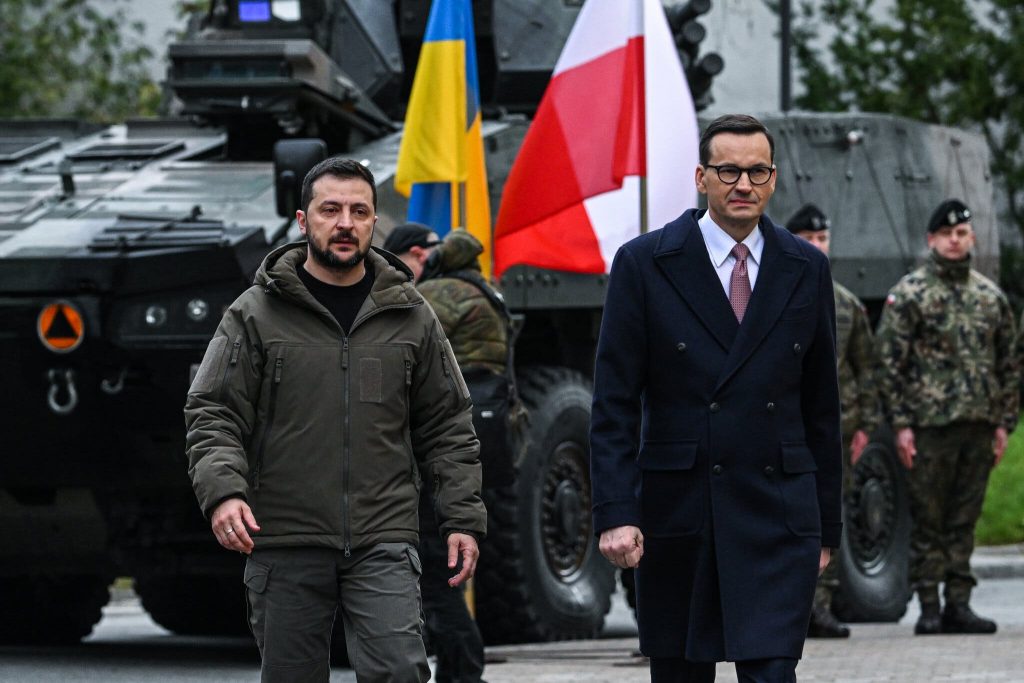
Through the 1990s, cooperation between Poland and Ukraine moved from promise to routine. Under NATO’s Partnership for Peace, thousands of officers, planners, and soldiers cycled through shared trainings, simulations, and emergency drills. The aim was simple but radical for its time: to make coordination instinctive before crisis struck. One moment captured this new Europe in motion. In September 1994, German troops crossed into Poland — not as occupiers, but as partners in a NATO exercise called Cooperative Bridge. It was the first such deployment since World War II, quiet in headlines but historic in meaning. Poles, Ukrainians, Germans, and Americans trained side by side in peacekeeping and humanitarian missions, rehearsing the kind of cooperation that would later define the continent’s defense. From that bridge of drills and joint plans grew a habit of trust — one that would bind Warsaw and Kyiv long before the shooting began.
For Poland and Ukraine, cooperation became muscle memory long before it became necessity. Years of joint drills and shared planning under NATO’s Partnership for Peace taught both nations the habits of an alliance they had yet to formally share — command integration, crisis coordination, and the quiet discipline of interoperability. Each exercise reduced the chance of miscalculation, replacing suspicion with familiarity.
From those routines emerged lasting institutions. Ukraine’s International Center for Peacekeeping and Security opened in the mid-1990s as a hub for NATO and PFP forces. Polish and Ukrainian soldiers served side by side in Bosnia and later in Kosovo, where their joint battalion operated under NATO command. In Poland, the Lithuanian-Polish-Ukrainian Brigade—named for Grand Hetman Kostiantyn Ostrogsk—stood ready to respond to regional crises in days, not weeks. These experiences hardened into doctrine through deployments in Afghanistan and Iraq, turning cooperation into reflex. It was no accident, then, that Russia targeted Ukraine’s International Center in the opening hours of its 2022 invasion—it symbolized the very bridge Moscow sought to burn. By then, Ukraine’s role in NATO’s system was already tangible: the 1997 Charter on a Distinctive Partnership had given its officers a seat in NATO’s strategic process, a presence in Brussels, and a permanent NATO mission in Kyiv. Even under fire, that relationship endures—a testament to how long preparation can outlast the moment it was meant to prevent.
When NATO gathered in Bucharest in 2008, it seemed ready to welcome Ukraine into its future. Yet after the summit’s grand declarations came hesitation—and then silence. The follow-up never materialized. By 2009, the Alliance’s only gesture was a modest statement praising Ukraine’s “long record of contributions,” a diplomatic placeholder where a roadmap should have been.
It would take another war to break that inertia. At the Newport Summit in 2014, after Russia’s seizure of Crimea and the eastern Donbas, NATO finally named Moscow as a potential adversary. The recognition was belated but decisive: the eastern flank—from the Baltics to the Black Sea—would now stand at the center of NATO’s defense planning. For Poland, the shift merely confirmed what it had long believed. Russia had never ceased to be the primary threat. Building on its partnership with Ukraine, Warsaw accelerated military spending and fortified its defenses, positioning itself as the spearpoint of NATO’s territorial shield.
As Poland’s military weight inside NATO grew, it used that influence to draw Ukraine closer. Hosting the Alliance’s 2016 Summit, Warsaw championed a new framework—the Comprehensive Assistance Package—to modernize Ukraine’s armed forces. NATO advisors embedded in Kyiv began steering reforms that were as financial as they were strategic, transforming the Ukrainian military from a post-Soviet structure into a Western-oriented force. The effort continues to this day, forming the backbone of NATO’s material and institutional support for Ukraine.
The modernization went beyond the battlefield. Training in command and control expanded into civilian-military planning, cybersecurity, and infrastructure resilience. Ukrainian intelligence networks grew sharper, its communications harder to penetrate. When Russia launched its full-scale invasion in February 2022, those quiet reforms proved decisive. Ukraine’s survival in the war’s first months was not a miracle—it was the result of a decade of preparation shaped by Polish advocacy and NATO integration. Yet as their cooperation deepened, both Warsaw and Kyiv also saw the need to secure more than territory: to consolidate Ukraine’s democracy, ensuring that its independence would be sustained not just by soldiers, but by institutions.
Ukraine was no longer asking for entry; it was fighting as if it already belonged.
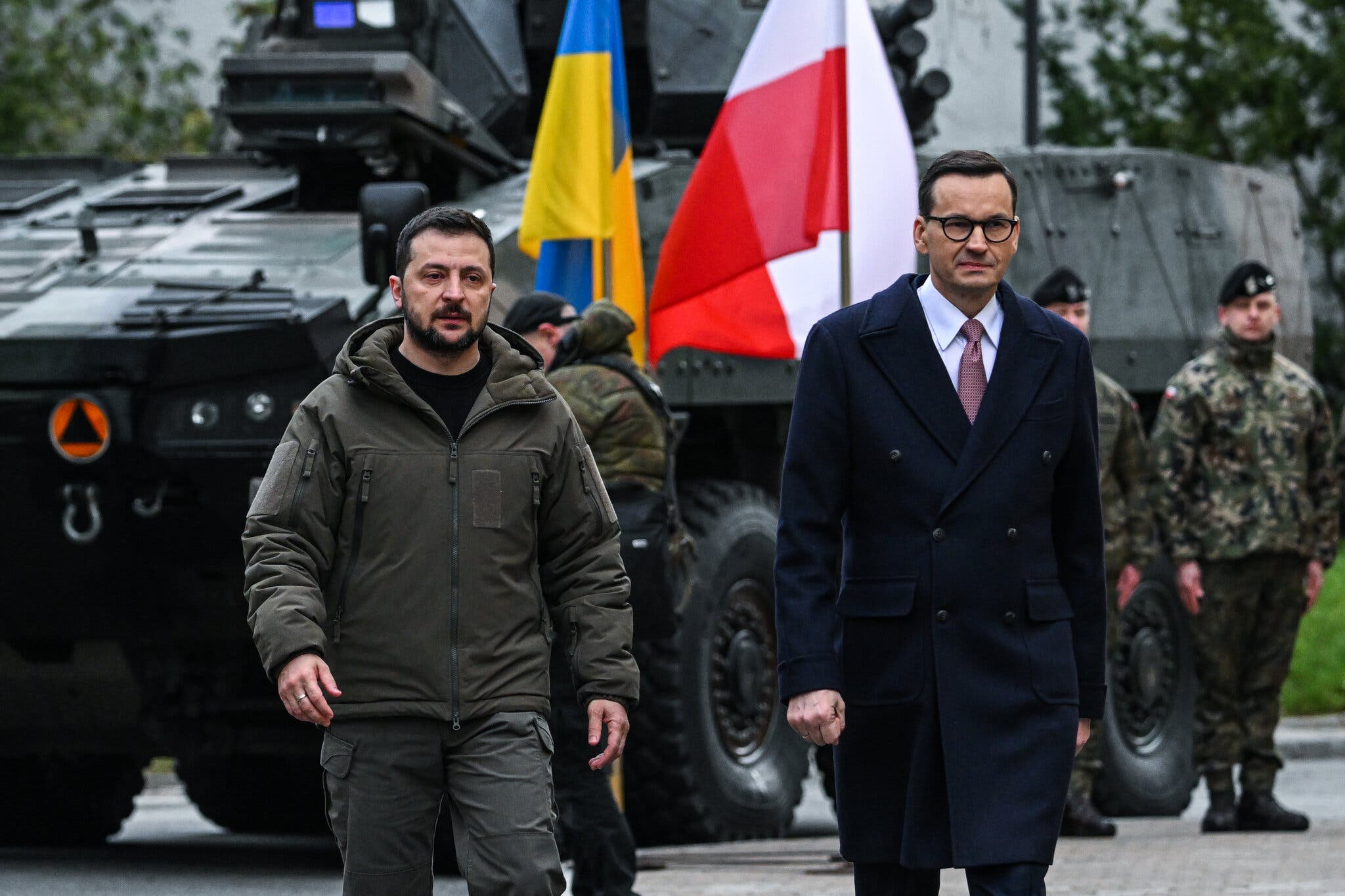
As Polish analysts Anna Kwiatkowska and Wojciech Konończuk observed, the bond between Warsaw and Kyiv deepened with each political awakening in Ukraine—first the Orange Revolution in 2004, then the Revolution of Dignity a decade later, and finally the all-out war that erupted in 2022. Each wave of defiance pulled Poland closer, turning sympathy into strategy. Even during the simmering conflict of 2014–2019, when Russian forces occupied Crimea and eastern Ukraine, Kyiv refused to wait for NATO’s permission. In 2019 it amended its constitution to declare full membership in the Alliance a national goal.
On the eve of the invasion, President Volodymyr Zelenskyy stood before world leaders at the Munich Security Conference and posed a challenge that still echoes: “We are told the door is open. But so far, authorized access only.” Days later, that door was tested by fire. By September 2022, Ukraine formally applied for accelerated accession, declaring itself a de facto ally already meeting NATO standards “on the battlefield.” That moment crystallized the divide NATO had tried for decades to bridge. Ukraine was no longer asking for entry; it was fighting as if it already belonged. And beside it, Poland continued to shoulder the same conviction—that Ukraine’s survival is not a question of charity or timing, but of Europe’s endurance itself.
The Eastern Backbone
By the end of 2021, the signs were no longer subtle. Satellite images, Western intelligence briefings, and White House warnings all pointed to a Russian buildup of nearly 190,000 troops along Ukraine’s borders with Russia and Belarus. In Warsaw, the pattern was grimly familiar. Poland and NATO dismissed Moscow’s December ultimatum that eastern flank nations—including Poland—halt all NATO exercises and deployments. The demand was not diplomacy; it was a prelude. Anticipating the inevitable, Poland moved early. In January 2022, it formally requested a larger U.S. presence along its eastern frontier, both to secure its territory and to prepare for the flow of arms that would soon sustain Ukraine’s defense. President Andrzej Duda framed the request not as a plea but as proof of solidarity: an act that “symbolized the unity and cooperation of democratic countries” against terror.
When the invasion came, Warsaw wasted no time. Convoys of Polish armor, missiles, and drones streamed eastward. Anti-aircraft batteries, howitzers, and fighter jets followed, transforming Poland from NATO’s shield into Ukraine’s armory. In doing so, Poland accepted a new reality: the defense of Europe’s east could no longer be measured in treaties or distances, but in the speed with which one democracy could arm another before the next wave arrived.
Since 2022, the American footprint in Eastern Poland has deepened into permanence. The U.S. Army’s V Corps, headquartered at Fort Knox, opened a forward command in Poznań, giving NATO a standing operational center on the Alliance’s most exposed flank. The decision, formalized at the June 2022 NATO Summit, ended years of rotation and hesitation; by 2023, U.S. soldiers were permanently stationed at Camp Kościuszko beside their Polish counterparts. As Poland’s defense minister put it, the move secured not just Polish soil but “the entire eastern flank of NATO.”
The deployment reshaped the geography of deterrence. NATO’s forward and home defense forces began training as one, mapping Poland’s terrain, logistics hubs, and stockpiles for rapid reinforcement. Along Poland’s 300-mile border with Ukraine—cut by nearly fifteen crossings—this integration turned geography into advantage. Through those corridors now flow the lifelines of Ukraine’s resistance: Javelins and Stingers, drones and munitions, medical convoys and armored transports. Each crossing is a reminder that Poland has become not just NATO’s shield, but its gateway to the war that defines Europe’s future.
At the same time, Poland’s frontier became a corridor of both war and refuge. Millions of Ukrainians crossed those same roads that carried weapons eastward, finding safety in Poland without the fences or camps that once defined Europe’s refugee crises. The country absorbed the largest civilian flight in modern history and did so as if it were an act of defense itself. Behind that humanitarian front, the military integration deepened. Building on a 2016 U.S.–Polish agreement, Washington developed its Aegis Ashore air defense site in Radzików, linking Poland directly to the broader European Phased Adaptive Approach. By 2024, the system was fully wired into America’s Ramstein command network in Germany, giving NATO a real-time air defense hub on its eastern edge.
The result was a transformed landscape. Roads once built for trade became arteries for tanks and convoys; airfields and depots turned into launching points for forward units. Central and Eastern Poland evolved into NATO’s primary staging ground, a logistics spine that made reinforcement possible within hours. To secure it, Warsaw launched the East Shield—the largest border defense project since 1945—fortifying its frontier with new bunkers, sensors, and anti-drone systems. Poland was no longer just the neighbor of a war; it had become its backbone.
The East Shield took shape through relentless coordination. Poland worked hand in hand with NATO allies and Ukrainian engineers to harden its northeastern frontier—laying minefields, building bunkers, and planting anti-tank barriers across the plains that once invited invasion. Satellite surveillance and thermal imaging knit together a new web of early-warning systems; ambush zones and resupply depots dotted the forests. Every meter of soil between Belarus and the Vistula was reimagined as both wall and trap.
Yet even with this massive build-up, the short-term reality remained clear: Poland and Ukraine’s air and ground security still leaned on U.S. and NATO hardware. Only Ukraine’s wartime ingenuity—its vast drone production and growing missile programs—stood as an indigenous counterweight. In 2024, as Russian salvos rained down week after week, Kyiv began training Polish and allied officers in anti-drone tactics refined on the battlefield. Still, Ukraine’s defenses needed constant replenishment. Each new wave of Russian missiles exposed the limits of even the best coordination.
By the summer of 2024, with NATO’s Washington Summit approaching, the alliance faced its own test of speed. Small Russian incursions into Polish airspace had already raised alarms, but allied responses lagged. In a joint declaration just before the summit, Prime Minister Donald Tusk and President Volodymyr Zelenskyy announced a new phase: Polish air defenses would now be cleared to shoot down Russian missiles and drones threatening Ukraine. It was more than a tactical move—it was the public fusion of two nations’ airspace into a single shield.
The pressure extended beyond the skies. In southeastern Poland, the Rzeszów–Jasionka Airport evolved into the war’s logistical heart — the place where NATO’s supply chains met Ukraine’s survival. Barely an hour’s drive from the border, it now funnels nearly eighty percent of Western military aid into Ukrainian hands. Diplomats and generals fly in through the same runways that launch convoys of howitzers and ammunition eastward. Such a lifeline demands constant defense. Polish counterintelligence and special forces work around the clock to shield the hub from sabotage, protecting not only the flow of weapons but the flow of leadership. Between 2024 and 2025, Warsaw foiled multiple Russian operations in and around Rzeszów—cyberattacks on logistics networks, infiltration plots, and even assassination attempts against President Zelenskyy. Each uncovered cell underscored the same reality: the battle for Ukraine is also a battle for Poland’s rear guard, fought in server rooms, train yards, and border towns where the war’s invisible front never rests.
The War That Won’t Freeze
To much of Europe, the war has settled into a distant stalemate. But for Poland and Ukraine, the front still burns. What outsiders call a frozen conflict, Warsaw reads as an existential struggle — not only for Ukraine’s sovereignty but for Poland’s freedom. In Polish eyes, the fight is the latest chapter in a thousand-year contest against Russian empire, and Ukraine’s eventual NATO membership is the only true end to it.
By September 2025, Russia had begun testing that boundary directly. Its drones drifted across allied skies; its fighters clipped NATO airspace; its ships cut undersea cables linking Europe’s grids and data lines. The attacks of September 9–10 became the breaking point. Dozens of drones were shot down over Ukraine before reaching Polish territory, but the message was unmistakable: the war had crossed into NATO’s shadow. From that moment, Warsaw and Kyiv pressed the Alliance to act. NATO’s answer came swiftly — Operation Eastern Sentry, an emergency deployment designed to reinforce Europe’s air defenses with both traditional firepower and new technologies. What began as a deterrent soon turned into a signal: the era of hesitation on the eastern flank was over.
Through the 1990s, cooperation between Poland and Ukraine moved from promise to routine. Under NATO’s Partnership for Peace, thousands of officers, planners, and soldiers cycled through shared trainings, simulations, and emergency drills. The aim was simple but radical for its time: to make coordination instinctive before crisis struck. One moment captured this new Europe in motion. In September 1994, German troops crossed into Poland — not as occupiers, but as partners in a NATO exercise called Cooperative Bridge. It was the first such deployment since World War II, quiet in headlines but historic in meaning. Poles, Ukrainians, Germans, and Americans trained side by side in peacekeeping and humanitarian missions, rehearsing the kind of cooperation that would later define the continent’s defense. From that bridge of drills and joint plans grew a habit of trust — one that would bind Warsaw and Kyiv long before the shooting began.
For Poland and Ukraine, cooperation became muscle memory long before it became necessity. Years of joint drills and shared planning under NATO’s Partnership for Peace taught both nations the habits of an alliance they had yet to formally share — command integration, crisis coordination, and the quiet discipline of interoperability. Each exercise reduced the chance of miscalculation, replacing suspicion with familiarity.
From those routines emerged lasting institutions. Ukraine’s International Center for Peacekeeping and Security opened in the mid-1990s as a hub for NATO and PFP forces. Polish and Ukrainian soldiers served side by side in Bosnia and later in Kosovo, where their joint battalion operated under NATO command. In Poland, the Lithuanian-Polish-Ukrainian Brigade—named for Grand Hetman Kostiantyn Ostrogsk—stood ready to respond to regional crises in days, not weeks. These experiences hardened into doctrine through deployments in Afghanistan and Iraq, turning cooperation into reflex. It was no accident, then, that Russia targeted Ukraine’s International Center in the opening hours of its 2022 invasion—it symbolized the very bridge Moscow sought to burn. By then, Ukraine’s role in NATO’s system was already tangible: the 1997 Charter on a Distinctive Partnership had given its officers a seat in NATO’s strategic process, a presence in Brussels, and a permanent NATO mission in Kyiv. Even under fire, that relationship endures—a testament to how long preparation can outlast the moment it was meant to prevent.
When NATO gathered in Bucharest in 2008, it seemed ready to welcome Ukraine into its future. Yet after the summit’s grand declarations came hesitation—and then silence. The follow-up never materialized. By 2009, the Alliance’s only gesture was a modest statement praising Ukraine’s “long record of contributions,” a diplomatic placeholder where a roadmap should have been.
It would take another war to break that inertia. At the Newport Summit in 2014, after Russia’s seizure of Crimea and the eastern Donbas, NATO finally named Moscow as a potential adversary. The recognition was belated but decisive: the eastern flank—from the Baltics to the Black Sea—would now stand at the center of NATO’s defense planning. For Poland, the shift merely confirmed what it had long believed. Russia had never ceased to be the primary threat. Building on its partnership with Ukraine, Warsaw accelerated military spending and fortified its defenses, positioning itself as the spearpoint of NATO’s territorial shield.
As Poland’s military weight inside NATO grew, it used that influence to draw Ukraine closer. Hosting the Alliance’s 2016 Summit, Warsaw championed a new framework—the Comprehensive Assistance Package—to modernize Ukraine’s armed forces. NATO advisors embedded in Kyiv began steering reforms that were as financial as they were strategic, transforming the Ukrainian military from a post-Soviet structure into a Western-oriented force. The effort continues to this day, forming the backbone of NATO’s material and institutional support for Ukraine.
The modernization went beyond the battlefield. Training in command and control expanded into civilian-military planning, cybersecurity, and infrastructure resilience. Ukrainian intelligence networks grew sharper, its communications harder to penetrate. When Russia launched its full-scale invasion in February 2022, those quiet reforms proved decisive. Ukraine’s survival in the war’s first months was not a miracle—it was the result of a decade of preparation shaped by Polish advocacy and NATO integration. Yet as their cooperation deepened, both Warsaw and Kyiv also saw the need to secure more than territory: to consolidate Ukraine’s democracy, ensuring that its independence would be sustained not just by soldiers, but by institutions.
As Polish analysts Anna Kwiatkowska and Wojciech Konończuk observed, the bond between Warsaw and Kyiv deepened with each political awakening in Ukraine—first the Orange
Revolution in 2004, then the Revolution of Dignity a decade later, and finally the all-out war that erupted in 2022. Each wave of defiance pulled Poland closer, turning sympathy into strategy. Even during the simmering conflict of 2014–2019, when Russian forces occupied Crimea and eastern Ukraine, Kyiv refused to wait for NATO’s permission. In 2019 it amended its constitution to declare full membership in the Alliance a national goal.
On the eve of the invasion, President Volodymyr Zelenskyy stood before world leaders at the Munich Security Conference and posed a challenge that still echoes: “We are told the door is open. But so far, authorized access only.” Days later, that door was tested by fire. By September 2022, Ukraine formally applied for accelerated accession, declaring itself a de facto ally already meeting NATO standards “on the battlefield.” That moment crystallized the divide NATO had tried for decades to bridge. Ukraine was no longer asking for entry; it was fighting as if it already belonged. And beside it, Poland continued to shoulder the same conviction—that Ukraine’s survival is not a question of charity or timing, but of Europe’s endurance itself.
The Eastern Backbone
By the end of 2021, the signs were no longer subtle. Satellite images, Western intelligence briefings, and White House warnings all pointed to a Russian buildup of nearly 190,000 troops along Ukraine’s borders with Russia and Belarus. In Warsaw, the pattern was grimly familiar. Poland and NATO dismissed Moscow’s December ultimatum that eastern flank nations—including Poland—halt all NATO exercises and deployments. The demand was not diplomacy; it was a prelude. Anticipating the inevitable, Poland moved early. In January 2022, it formally requested a larger U.S. presence along its eastern frontier, both to secure its territory and to prepare for the flow of arms that would soon sustain Ukraine’s defense. President Andrzej Duda framed the request not as a plea but as proof of solidarity: an act that “symbolized the unity and cooperation of democratic countries” against terror.
When the invasion came, Warsaw wasted no time. Convoys of Polish armor, missiles, and drones streamed eastward. Anti-aircraft batteries, howitzers, and fighter jets followed, transforming Poland from NATO’s shield into Ukraine’s armory. In doing so, Poland accepted a new reality: the defense of Europe’s east could no longer be measured in treaties or distances, but in the speed with which one democracy could arm another before the next wave arrived.
Since 2022, the American footprint in Eastern Poland has deepened into permanence. The U.S. Army’s V Corps, headquartered at Fort Knox, opened a forward command in Poznań, giving NATO a standing operational center on the Alliance’s most exposed flank. The decision, formalized at the June 2022 NATO Summit, ended years of rotation and hesitation; by 2023, U.S. soldiers were permanently stationed at Camp Kościuszko beside their Polish counterparts. As Poland’s defense minister put it, the move secured not just Polish soil but “the entire eastern flank of NATO.”
The deployment reshaped the geography of deterrence. NATO’s forward and home defense forces began training as one, mapping Poland’s terrain, logistics hubs, and stockpiles for rapid reinforcement. Along Poland’s 300-mile border with Ukraine—cut by nearly fifteen crossings—this integration turned geography into advantage. Through those corridors now flow the lifelines of Ukraine’s resistance: Javelins and Stingers, drones and munitions, medical convoys and armored transports. Each crossing is a reminder that Poland has become not just NATO’s shield, but its gateway to the war that defines Europe’s future.
At the same time, Poland’s frontier became a corridor of both war and refuge. Millions of Ukrainians crossed those same roads that carried weapons eastward, finding safety in Poland without the fences or camps that once defined Europe’s refugee crises. The country absorbed the largest civilian flight in modern history and did so as if it were an act of defense itself. Behind that humanitarian front, the military integration deepened. Building on a 2016 U.S.–Polish agreement, Washington developed its Aegis Ashore air defense site in Radzików, linking Poland directly to the broader European Phased Adaptive Approach. By 2024, the system was fully wired into America’s Ramstein command network in Germany, giving NATO a real-time air defense hub on its eastern edge.
The result was a transformed landscape. Roads once built for trade became arteries for tanks and convoys; airfields and depots turned into launching points for forward units. Central and Eastern Poland evolved into NATO’s primary staging ground, a logistics spine that made reinforcement possible within hours. To secure it, Warsaw launched the East Shield—the largest border defense project since 1945—fortifying its frontier with new bunkers, sensors, and anti-drone systems. Poland was no longer just the neighbor of a war; it had become its backbone.
The East Shield took shape through relentless coordination. Poland worked hand in hand with NATO allies and Ukrainian engineers to harden its northeastern frontier—laying minefields, building bunkers, and planting anti-tank barriers across the plains that once invited invasion. Satellite surveillance and thermal imaging knit together a new web of early-warning systems; ambush zones and resupply depots dotted the forests. Every meter of soil between Belarus and the Vistula was reimagined as both wall and trap.
Yet even with this massive build-up, the short-term reality remained clear: Poland and Ukraine’s air and ground security still leaned on U.S. and NATO hardware. Only Ukraine’s wartime ingenuity—its vast drone production and growing missile programs—stood as an indigenous counterweight. In 2024, as Russian salvos rained down week after week, Kyiv began training Polish and allied officers in anti-drone tactics refined on the battlefield. Still, Ukraine’s defenses needed constant replenishment. Each new wave of Russian missiles exposed the limits of even the best coordination.
By the summer of 2024, with NATO’s Washington Summit approaching, the alliance faced its own test of speed. Small Russian incursions into Polish airspace had already raised alarms, but allied responses lagged. In a joint declaration just before the summit, Prime Minister Donald Tusk and President Volodymyr Zelenskyy announced a new phase: Polish air defenses would now be cleared to shoot down Russian missiles and drones threatening Ukraine. It was more than a tactical move—it was the public fusion of two nations’ airspace into a single shield.
The pressure extended beyond the skies. In southeastern Poland, the Rzeszów–Jasionka Airport evolved into the war’s logistical heart — the place where NATO’s supply chains met Ukraine’s survival. Barely an hour’s drive from the border, it now funnels nearly eighty percent of Western military aid into Ukrainian hands. Diplomats and generals fly in through the same runways that launch convoys of howitzers and ammunition eastward. Such a lifeline demands constant defense. Polish counterintelligence and special forces work around the clock to shield the hub from sabotage, protecting not only the flow of weapons but the flow of leadership. Between 2024 and 2025, Warsaw foiled multiple Russian operations in and around Rzeszów—cyberattacks on logistics networks, infiltration plots, and even assassination attempts against President Zelenskyy. Each uncovered cell underscored the same reality: the battle for Ukraine is also a battle for Poland’s rear guard, fought in server rooms, train yards, and border towns where the war’s invisible front never rests.
To much of Europe, the war has settled into a distant stalemate. But for Poland and Ukraine, the front still burns. What outsiders call a frozen conflict, Warsaw reads as an existential struggle — not only for Ukraine’s sovereignty but for Poland’s freedom. In Polish eyes, the fight is the latest chapter in a thousand-year contest against Russian empire, and Ukraine’s eventual NATO membership is the only true end to it.
By September 2025, Russia had begun testing that boundary directly. Its drones drifted across allied skies; its fighters clipped NATO airspace; its ships cut undersea cables linking Europe’s grids and data lines. The attacks of September 9–10 became the breaking point. Dozens of drones were shot down over Ukraine before reaching Polish territory, but the message was unmistakable: the war had crossed into NATO’s shadow. From that moment, Warsaw and Kyiv pressed the Alliance to act. NATO’s answer came swiftly — Operation Eastern Sentry, an emergency deployment designed to reinforce Europe’s air defenses with both traditional firepower and new technologies. What began as a deterrent soon turned into a signal: the era of hesitation on the eastern flank was over.
NATO’s response along Poland’s eastern frontier has grown urgent. The Alliance’s new deployments are meant not only to “shield and protect all Allies,” but to force a faster adaptation to the joint Russia–Belarus campaign now
pressing against NATO’s borders. Operation Eastern Sentry is more than an air-defense exercise; it is a rehearsal for a new kind of war — one fought by drones and counter-drones, by sensors as much as soldiers. For Warsaw, this means accelerating its own modernization: building rapid-response systems, expanding coordination hubs, and learning in real time from Ukraine’s battle-hardened forces, whose experience with drone warfare has become NATO’s new manual.
The September attacks also exposed another vulnerability: the arteries that sustain Ukraine through Poland. Moscow’s latest wave of strikes sought not just to terrorize, but to choke the logistics chain anchored around the Rzeszów–Jasionka hub. That complex now functions as the beating heart of NATO’s supply system — its runways and railways linking Europe’s interior to Ukraine’s front. To stay ahead of the threat, Poland and NATO are reinforcing every connection: rebuilding airfields, securing transport corridors, and, when necessary, shifting operations temporarily north to Lublin. What began as a temporary lifeline is fast becoming a permanent architecture of defense.
As Russian drones began targeting both Rzeszów and Lublin, Poland’s two eastern airports turned into twin anchors of NATO’s forward base network — hubs where civilian infrastructure now serves military purpose. Runways are being lengthened, hangars reinforced, and command centers hardened against electronic attack. The scramble to modernize them marks a deeper shift: Poland and its allies are building not just to sustain the war, but to give NATO strategic depth it never had before.
In Warsaw and Kyiv, the urgency has become doctrine. Prime Minister Donald Tusk captured it plainly: “This is our war, because the war in Ukraine is just one part of this ghastly upheaval that appears around the world… its goal is always the same — to enslave nations, to deprive people of freedom, to make authoritarianism triumph.” His words distilled what Poland’s actions already declared: Ukraine’s defense is Europe’s defense.
The quiet July 2024 Poland–Ukraine Security Agreement gave that conviction structure. It formalized the transfer of everything from cyber-defense systems and mobile anti-aircraft units to loitering drones, howitzers, tanks, and fighter jets. Each shipment deepened interdependence — Ukraine fighting with Polish arms, Poland learning from Ukraine’s battlefield innovations. Together they form not just an alliance, but a mechanism of endurance: a joint system built to keep Europe supplied, responsive, and awake.
For Warsaw and Kyiv, Russia’s war is not about territory—it is about erasure. Moscow’s goals are absolute: to strip Ukraine of sovereignty, block its European path, and dissolve its statehood altogether. Every negotiation, Poland warns, becomes another weapon in Russia’s arsenal, a pause used to reload. Diplomats may search for peace, but Moscow has learned to wage diplomacy the same way it wages war—through coercion and delay. President Zelenskyy’s warning from a year earlier now sounds prophetic: “Do not ask Ukraine when the war will end. Ask why Putin is still able to continue it. This is Russia’s war against any rules at all.” For Ukraine, victory is not a line on a map but the end of rulelessness itself.
Poland shares that conviction. It knows what a Russian “peace” would mean for Europe’s borderlands—occupation under another name. That is why the Poland–Ukraine military pillar has become more than an alliance; it is the mechanism through which Europe learns to defend itself again. With NATO’s Eastern Sentry reinforcing this axis, and Ukrainian forces already operating to Alliance standards in every sense but formality, the boundary between member and partner has all but disappeared. Ukraine fights within NATO’s system—and, in truth, for it.
Ukraine no longer waits to be treated as an ally—it behaves as one. Its wartime drone production, unmatched in scale and sophistication, has turned Kyiv into NATO’s unexpected teacher. Alliance officers now study Ukraine’s anti-drone tactics, integrate its battlefield data, and seek its counsel on technologies that barely existed when the war began. In every practical sense, Ukraine already operates inside NATO’s ecosystem. Poland’s unrelenting advocacy has made that integration visible on the map.The border they share has become NATO’s hinge: a fortified corridor where training, logistics, and deterrence converge.
As U.S. support wavers, European allies have filled the gap, routing arms and funding through Poland, binding themselves ever tighter to Ukraine’s survival. This cooperation is fusing the Alliance’s air defenses with those of the Poland–Ukraine pillar, producing a single, adaptive shield that now defines Europe’s eastern horizon. What stands along that frontier is more than a defense line—it is the foundation of a new European order. From Rzeszów to Lviv, the network of bases, supply routes, and joint commands forms the physical proof of Ukraine’s anchoring in the West. Even before formal accession, its western heart already beats in rhythm with NATO’s.
Poland and its allies are building not just to sustain the war, but to give NATO strategic depth it never had before.
NATO’s response along Poland’s eastern frontier has grown urgent. The Alliance’s new deployments are meant not only to “shield and protect all Allies,” but to force a faster adaptation to the joint Russia–Belarus campaign now pressing against NATO’s borders. Operation Eastern Sentry is more than an air-defense exercise; it is a rehearsal for a new kind of war — one fought by drones and counter-drones, by sensors as much as soldiers. For Warsaw, this means accelerating its own modernization: building rapid-response systems, expanding coordination hubs, and learning in real time from Ukraine’s battle-hardened forces, whose experience with drone warfare has become NATO’s new manual.
The September attacks also exposed another vulnerability: the arteries that sustain Ukraine through Poland. Moscow’s latest wave of strikes sought not just to terrorize, but to choke the logistics chain anchored around the Rzeszów–Jasionka hub. That complex now functions as the beating heart of NATO’s supply system — its runways and railways linking Europe’s interior to Ukraine’s front. To stay ahead of the threat, Poland and NATO are reinforcing every connection: rebuilding airfields, securing transport corridors, and, when necessary, shifting operations temporarily north to Lublin. What began as a temporary lifeline is fast becoming a permanent architecture of defense.
As Russian drones began targeting both Rzeszów and Lublin, Poland’s two eastern airports turned into twin anchors of NATO’s forward base network — hubs where civilian infrastructure now serves military purpose. Runways are being lengthened, hangars reinforced, and command centers hardened against electronic attack. The scramble to modernize them marks a deeper shift: Poland and its allies are building not just to sustain the war, but to give NATO strategic depth it never had before.
In Warsaw and Kyiv, the urgency has become doctrine. Prime Minister Donald Tusk captured it plainly: “This is our war, because the war in Ukraine is just one part of this ghastly upheaval that appears around the world… its goal is always the same — to enslave nations, to deprive people of freedom, to make authoritarianism triumph.” His words distilled what Poland’s actions already declared: Ukraine’s defense is Europe’s defense.
The quiet July 2024 Poland–Ukraine Security Agreement gave that conviction structure. It formalized the transfer of everything from cyber-defense systems and mobile anti-aircraft units to loitering drones, howitzers, tanks, and fighter jets. Each shipment deepened interdependence — Ukraine fighting with Polish arms, Poland learning from Ukraine’s battlefield innovations. Together they form not just an alliance, but a mechanism of endurance: a joint system built to keep Europe supplied, responsive, and awake.
For Warsaw and Kyiv, Russia’s war is not about territory—it is about erasure. Moscow’s goals are absolute: to strip Ukraine of sovereignty, block its European path, and dissolve its statehood altogether. Every negotiation, Poland warns, becomes another weapon in Russia’s arsenal, a pause used to reload. Diplomats may search for peace, but Moscow has learned to wage diplomacy the same way it wages war—through coercion and delay. President Zelenskyy’s warning from a year earlier now sounds prophetic: “Do not ask Ukraine when the war will end. Ask why Putin is still able to continue it. This is Russia’s war against any rules at all.” For Ukraine, victory is not a line on a map but the end of rulelessness itself.
Poland shares that conviction. It knows what a Russian “peace” would mean for Europe’s borderlands—occupation under another name. That is why the Poland–Ukraine military pillar has become more than an alliance; it is the mechanism through which Europe learns to defend itself again. With NATO’s Eastern Sentry reinforcing this axis, and Ukrainian forces already operating to Alliance standards in every sense but formality, the boundary between member and partner has all but disappeared. Ukraine fights within NATO’s system—and, in truth, for it.
Ukraine no longer waits to be treated as an ally—it behaves as one. Its wartime drone production, unmatched in scale and sophistication, has turned Kyiv into NATO’s unexpected teacher. Alliance officers now study Ukraine’s anti-drone tactics, integrate its battlefield data, and seek its counsel on technologies that barely existed when the war began. In every practical sense, Ukraine already operates inside NATO’s ecosystem. Poland’s unrelenting advocacy has made that integration visible on the map.The border they share has become NATO’s hinge: a fortified corridor where training, logistics, and deterrence converge.
As U.S. support wavers, European allies have filled the gap, routing arms and funding through Poland, binding themselves ever tighter to Ukraine’s survival. This cooperation is fusing the Alliance’s air defenses with those of the Poland–Ukraine pillar, producing a single, adaptive shield that now defines Europe’s eastern horizon. What stands along that frontier is more than a defense line—it is the foundation of a new European order. From Rzeszów to Lviv, the network of bases, supply routes, and joint commands forms the physical proof of Ukraine’s anchoring in the West. Even before formal accession, its western heart already beats in rhythm with NATO’s.
Recommended
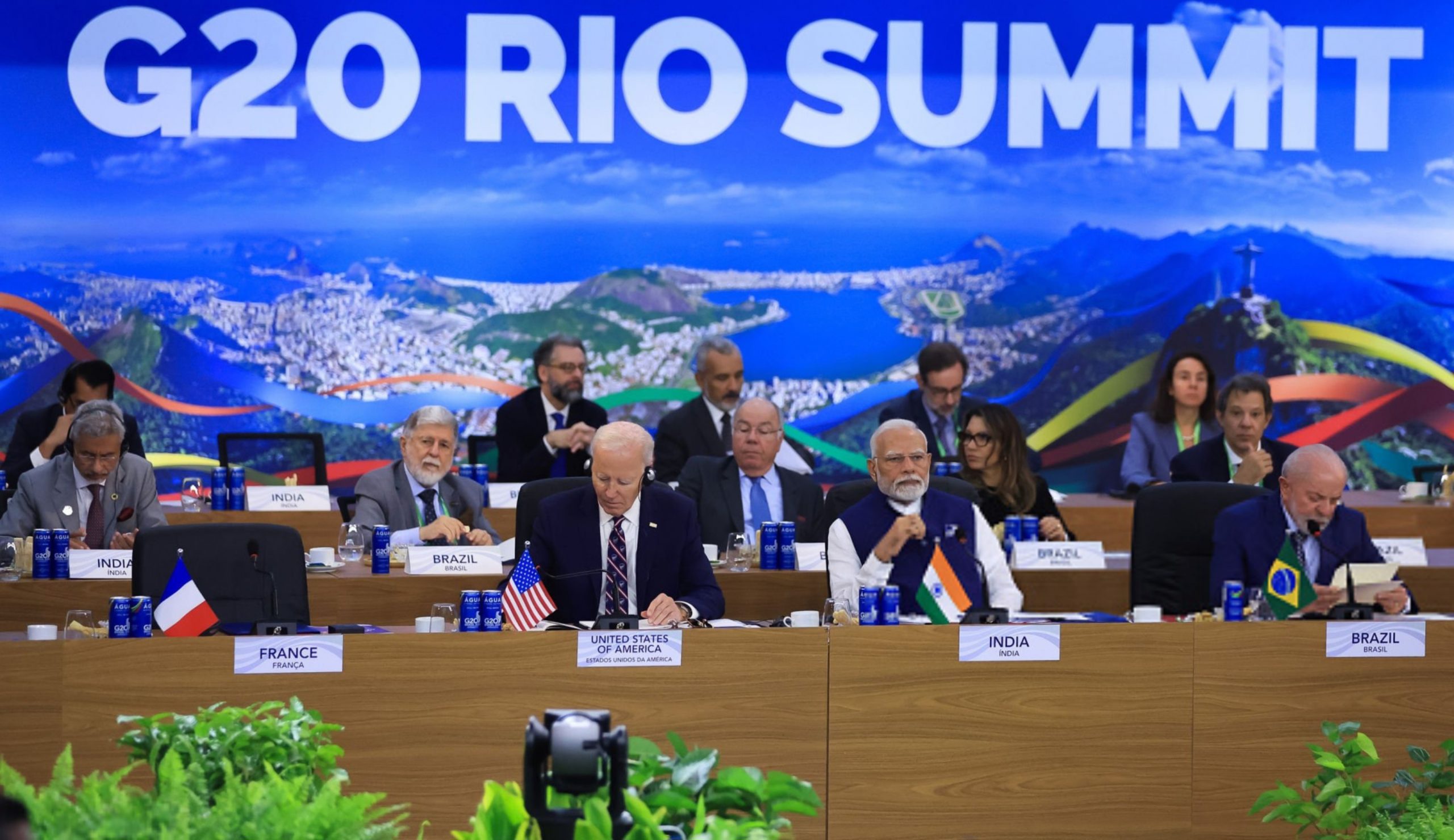
Unpacking the 2024 G20 Summit in Rio

Conflicting Approaches in Global Strategy

The Newcomers or the Incumbent?
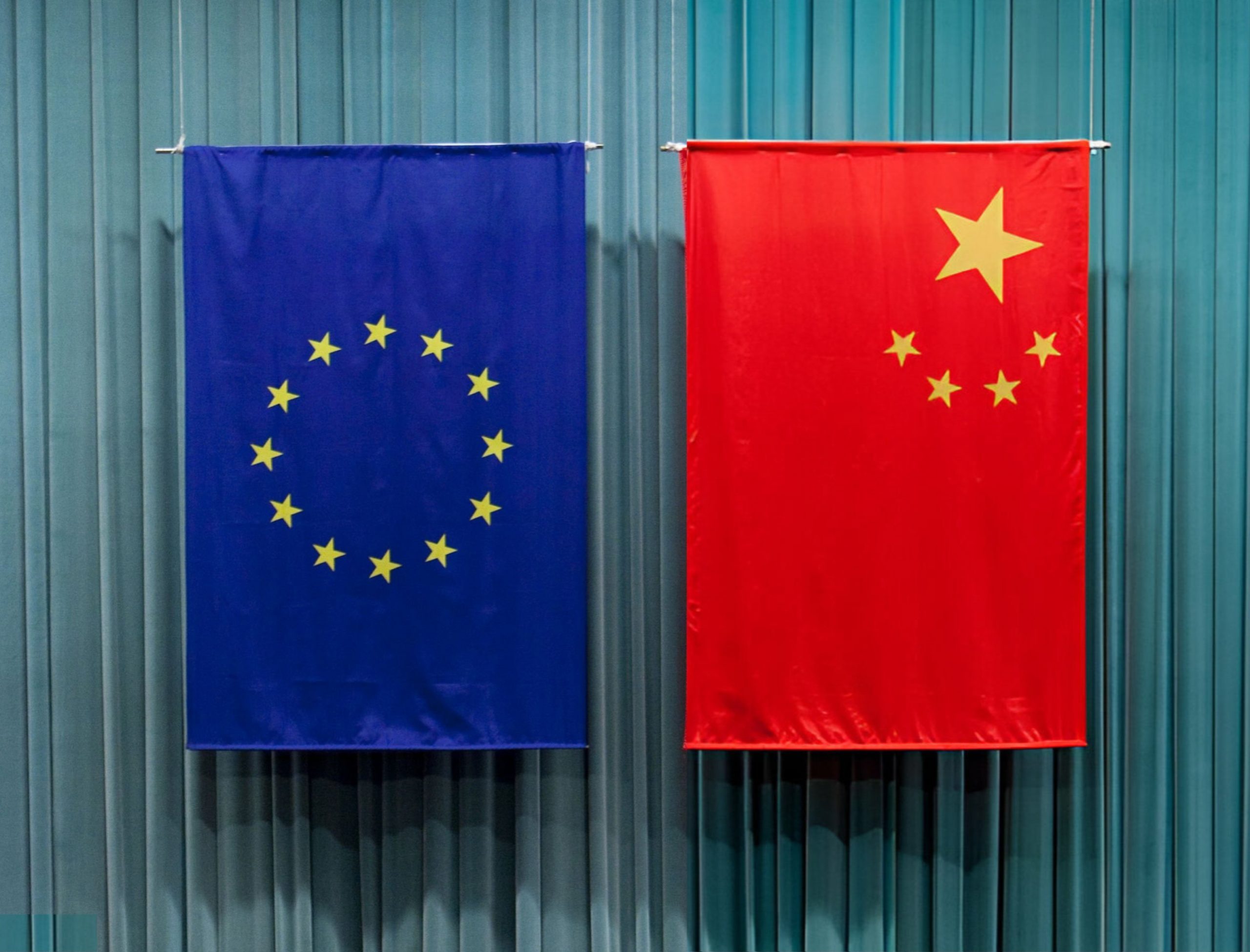
Unity or Division Against China?
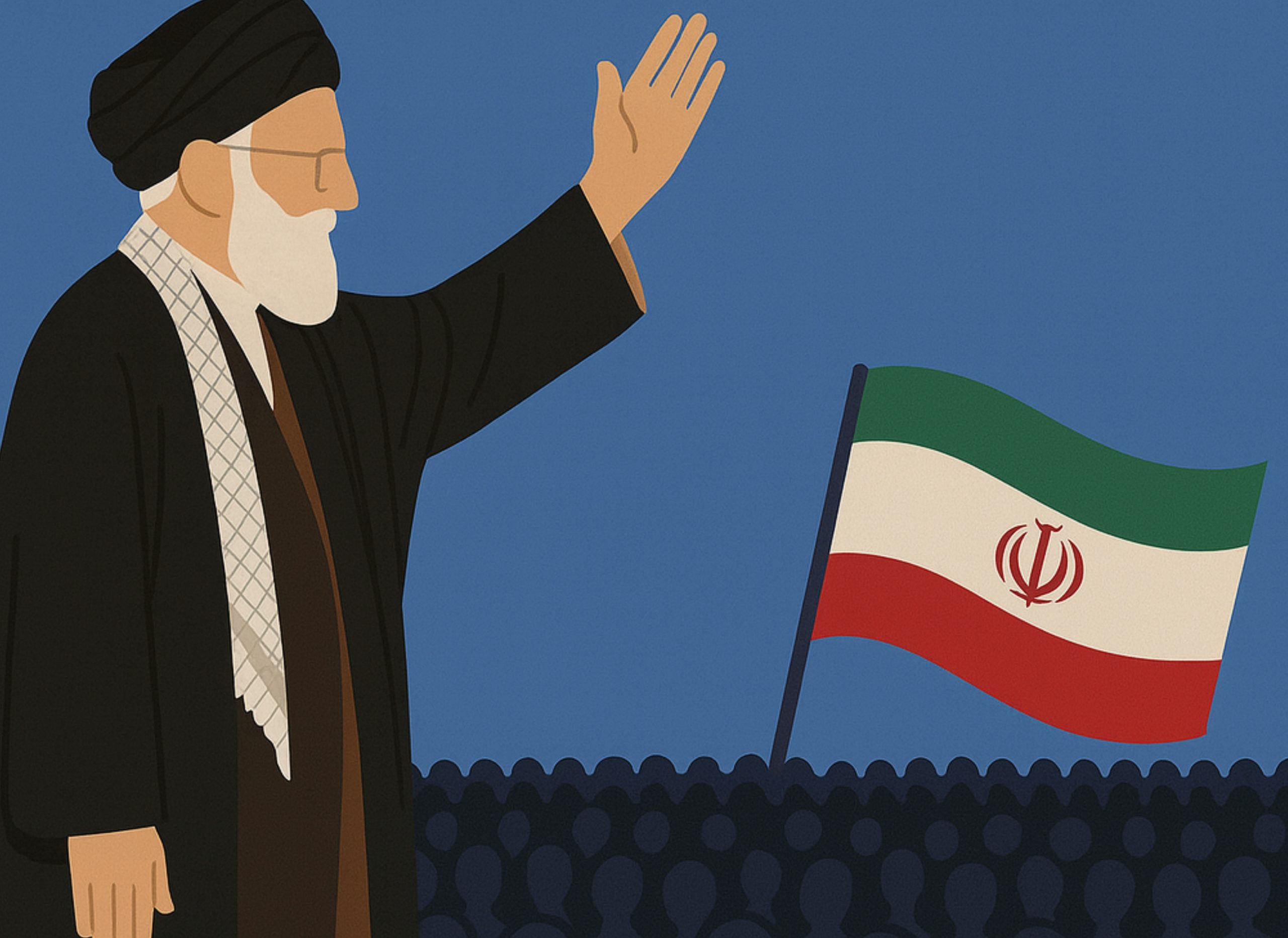
The Last Ayatollah
